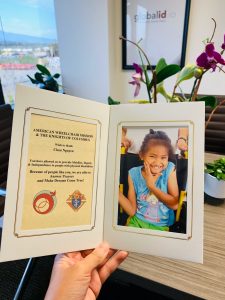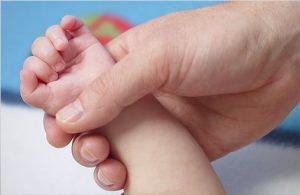Understanding Watersheds
Shannon King, Charity Director
Have you ever taken the time to think about where your water comes from? You turn on your faucet and water comes out but it didn’t start there. The story of your water begins with understanding the watershed.
Everyone lives within a watershed unless you are located at the edge of a ridge or at the top of a mountain. The watershed sustains life and creates a community. Protecting and keeping your watershed clean is important to your health and the productivity of your environment. According to the EPA (Environmental Protection Agency), more than $450 billion in food, fibers, manufactured goods, and tourism depend on a clean and healthy watershed.
in food, fibers, manufactured goods, and tourism depend on a clean and healthy watershed.
A watershed is an area of land that collects water from rain or snow into one location. Collected water seeps into the ground and flows into larger location such as a stream, river, lake, wetlands, or the ocean. A watershed can be on a small scale like the space between hills or a much bigger scale such as the Amazon basin. These bodies of water supply drinking water, water for agriculture and manufacturing, and provide a habitat for plants and animals. They also provide areas for recreation such as fishing or canoeing.
It’s important to maintain healthy watersheds. Pollutants including runoff and erosion can negatively impact the health of the watershed. Surface run off from storm water ultimately drains into other bodies of water and can contaminate the waters along the way. Anything that happens upstream ultimately affects anything downstream.
Protecting the watershed means protecting the lakes, rivers, or streams and managing the entire watershed that it drains into. Keeping this clean means educating the public to make informed decisions regarding the environment and actions taken by the community.
Most pollution in the watershed comes from sediments, bacteria like E Coli, and excess nutrients such as nitrogen and phosphorous. These pollutants can reach our waters through erosion, runoff of animal waste, and overflowing sewers. Sediment can clog fish gills causing suffocation. The presence of bacteria can be an indication of other germs and viruses in the water as well.
How do we do our part to keep our watersheds and thus our water supply clean and healthy? The following are some simple ways to do your part.
- Conserve water.
- Use eco-friendly cleaning products. Some soaps and shampoos aren’t removed during water treatment and can upset the ph balance of the water. This promotes unhealthy algae growth which depletes oxygen levels affecting the health of the aquatic population.
- Planting a rain garden (A rain garden is a planted depression or a hole that allows rainwater runoff from impervious urban areas, like roofs, driveways, walkways, parking lots, and compacted lawn areas, the opportunity to be absorbed) can cut down on the amount of pollution reaching creeks and streams by up to 30%.
- Use non-toxic or natural fertilizers like garlic or compost.
- Don’t litter! Don’t dump anything down storm drains, in lakes or in rivers.
- Don’t use soap to wash yourself if washing in lakes.
- Dispose of toxic household products properly. Hazardous waste does not belong in our landfills because they seep into the watershed.
- Keep your septic tank maintained.
- Unless using non-toxic biodegradable soap, wash your car at the car wash and not at home.
- Report any illegal dumping.
Water is imperative to the health and survival of our planet and all of her inhabitants. Together through awareness, action, and teaching others we can improve the conditions and conserve our watersheds.
To learn more about watersheds, why they are important, and how to protect them please visit Center for Watershed Protection at http://www.cwp.org


